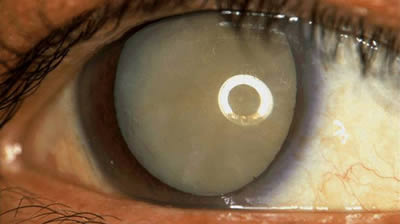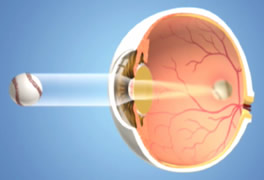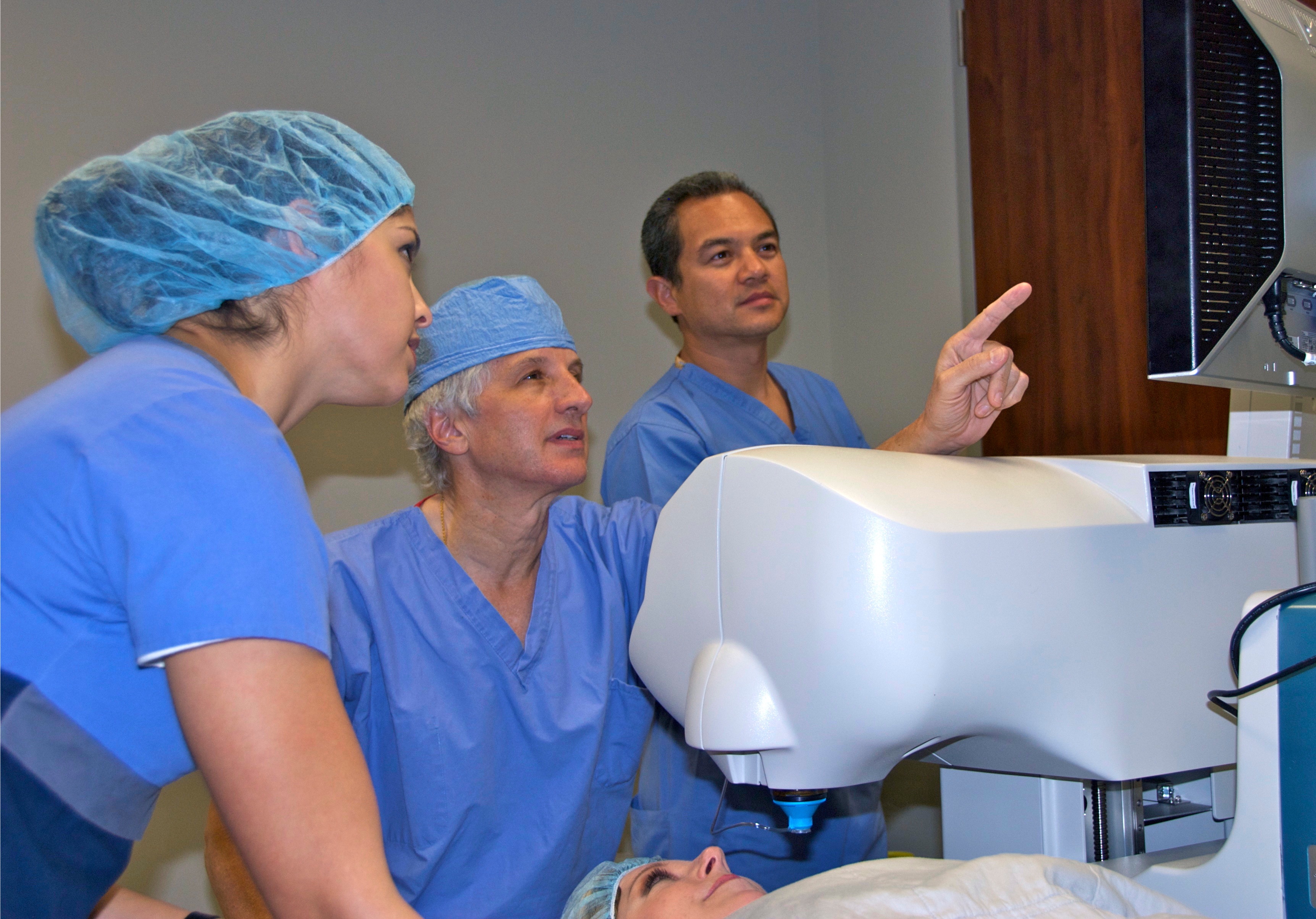What exactly is a cataract?
 Everyone is born with a clear, natural lens. Over time, with age and with the exposure to ultraviolet light, this lens becomes cloudy and affects our vision. As our natural lens gets cloudy, it does not allow light to pass through it as well as it did when it was clear. Cataracts often begin as slightly cloudy and then grow more and more opaque as time progresses. Although they are usually white, they may also be slightly yellow or brown.
Everyone is born with a clear, natural lens. Over time, with age and with the exposure to ultraviolet light, this lens becomes cloudy and affects our vision. As our natural lens gets cloudy, it does not allow light to pass through it as well as it did when it was clear. Cataracts often begin as slightly cloudy and then grow more and more opaque as time progresses. Although they are usually white, they may also be slightly yellow or brown.
 Progressively, as the cataract grows more opaque it also grows more dense, which causes the retina to receive less light. The light that does reach the retina will become distorted and blurry. A person will notice this as a gradual decrease in their vision. If not treated, cataracts can end up causing blindness. A cataract can only completely corrected by having a certified ophthalmic surgeon remove it.
Progressively, as the cataract grows more opaque it also grows more dense, which causes the retina to receive less light. The light that does reach the retina will become distorted and blurry. A person will notice this as a gradual decrease in their vision. If not treated, cataracts can end up causing blindness. A cataract can only completely corrected by having a certified ophthalmic surgeon remove it.
 The longer a patient waits to remove a cataract, the denser and more opaque it will grow. If a cataract becomes extremely mature, it will be more difficult to remove and will therefore cause a higher risk of potential surgical complications.
The longer a patient waits to remove a cataract, the denser and more opaque it will grow. If a cataract becomes extremely mature, it will be more difficult to remove and will therefore cause a higher risk of potential surgical complications.
When a cataract is removed, it is usually replaced with an intraocular lens implant often referred to as an IOL.
Luckily with all the advancements in technology, patients currently have many IOL lens implants to choose from for their cataract surgeries.